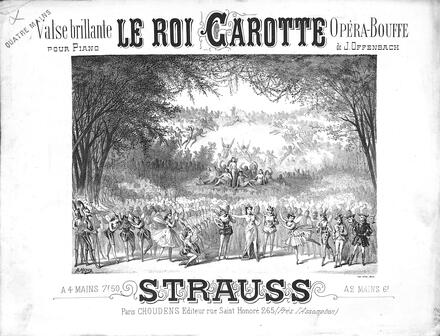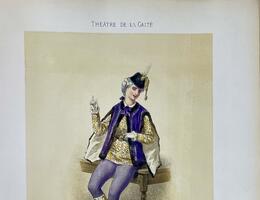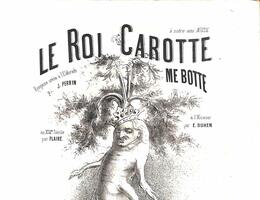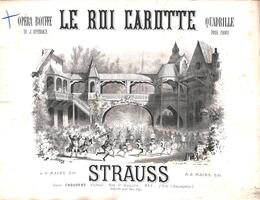Le Roi Carotte

Opéra-bouffe-féérie in four acts and nineteen scenes, premiered on 15 January 1872 at the Théâtre de la Gaîté.
Composed to a libretto by Victorien Sardou, Le Roi Carotte was the first collaboration between Offenbach and this man of letters with whom he was later to write La Haine (drama in five acts premiered in 1874). Sardou drew his inspiration on this occasion from the fairytale Klein Zaches, gennant Zinnober ('Little Zaches, Great Zinnober’) by the German Romantic writer Ernst Theodor Amadeus Hoffmann: the first act of Les Contes d’Hoffmann (1881) was also to draw on the same source. Performed 195 times after its premiere, the work has never been revived in Paris, probably due to the technical, human and financial constraints which impact heavily on its production. Six hours long, this comic opera includes two scenes set in Pompeii, for which the scenery was designed by the famous painter Jean-Louis Chéret, as well as a palace for the Roi Carotte, designed by Édouard Despleschin. In addition to the stage sets, there were lavish costumes produced by Théophile Thomas and Eugène Lacoste. The opera enthralled Paris audiences, who were greatly fond of spectacular entertainments. Critical reception of the work, however, revealed that certain journalists were discomfited by the political subject which some thought furnished a somewhat unflattering portrait of the deposed Imperial regime. Offenbach’s music, however, elicited the admiration of the public, enchanted by the skilful synthesis of various French opera genres: particularly opéra comique and grand opera. From 1872, the opera travelled to New York and London, where it was a resounding success. In 1877, it was premiered with equal success in Vienna. As smaller theatres found it impossible to put on the work in its entirety, numerous cuts were made.




